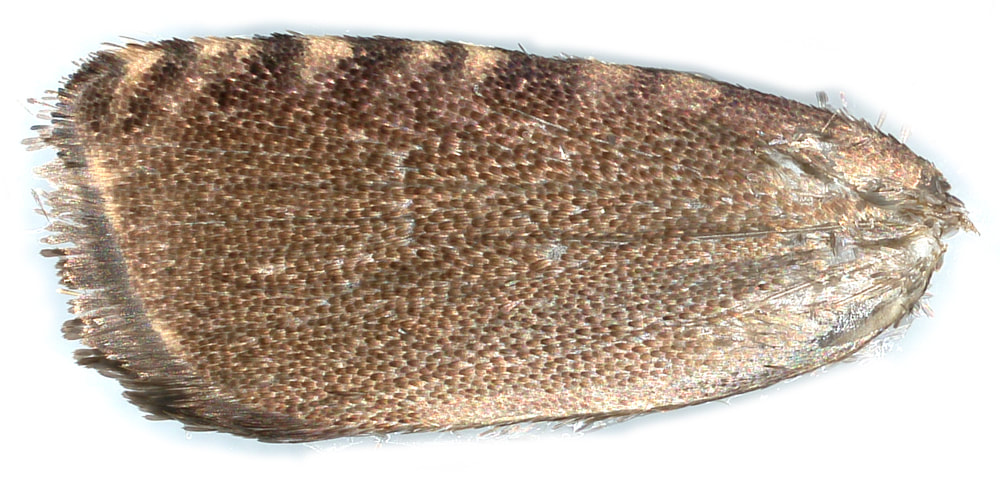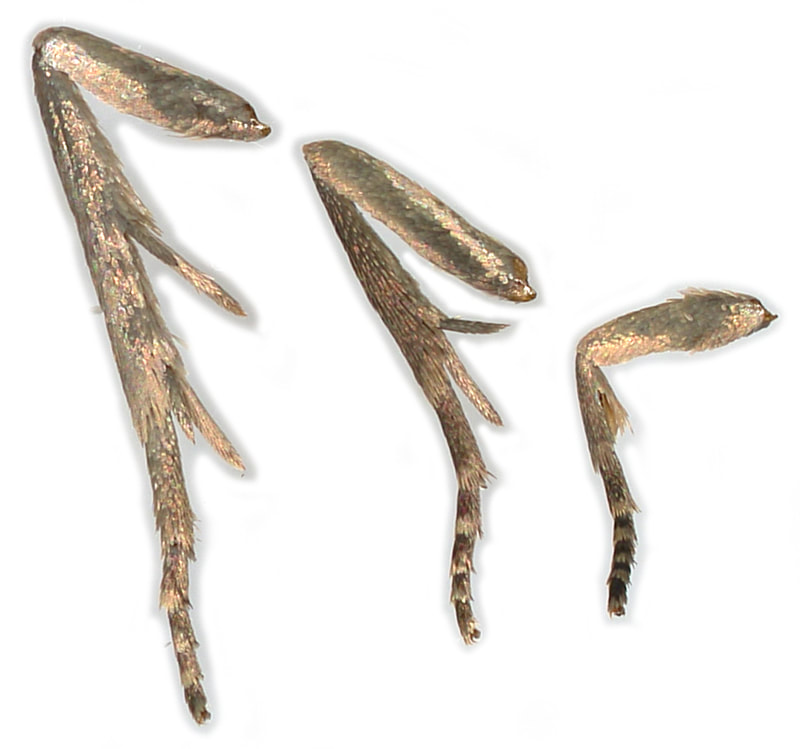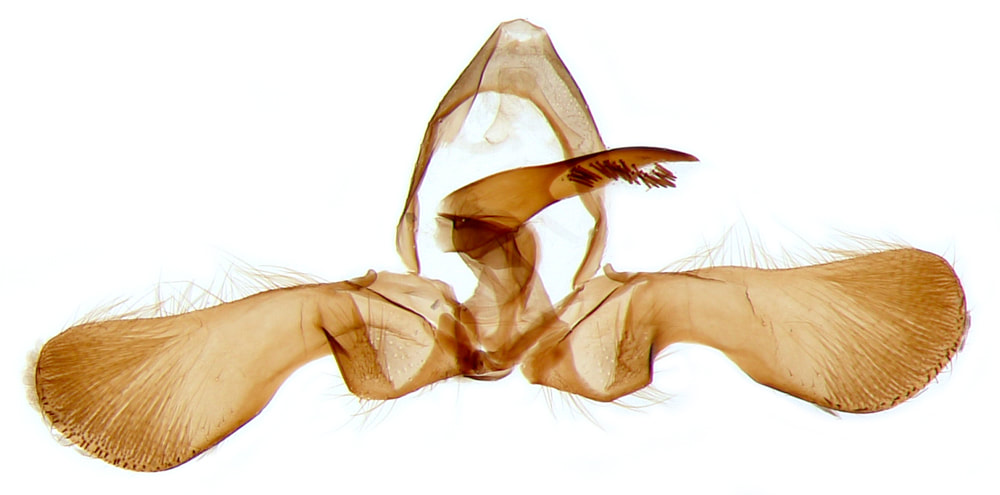49.336 Cydia pactolana (Scarce Spruce Bark Moth)
ws: 13-14mm (BTM, MBGBI5.2), fw: 5.5-8.0mm (Sterling & Parsons); May-Jul; Norway spruce (Picea abies), larch (Larix decidua); coniferous woods in Hampshire 1976 - 1985, subsequently a few records from Buckinghamshire and Hertfordshire
ID: Forewing brown, irrorate yellow in apical ⅓; without a pale dorsal blotch; paired white costal dashes the most proximal pair extended into a paired angular antemedian line; ocellus with some short black streaks, bordered proximally and distally by plumbeous lines.
Note that §1 shows far more striking yellow irroration and much less well-marked antemedian lines than is seen on other web image labelled as this species; it also has 5 pairs of white costal dashes, while all other images and the illustration in Sterling and Parsons show 4 pairs.
Male genitalia: 2 Cydia species have a deeply notched saccular margin and multiple small needle cornuti. In C.pactolana the distal side of the valval notch is much shallower than the proximal side; and the aedeagus is relatively long and tapered to a point. In C.conicolana both sides of the valval notch are steep and the aedeagus is relatively short and truncate. C.corollana (for which there is a single British record in 1850) may also have similar genital features (judging from the illustration in BTM, Olethreutinae, p252), but has a sufficiently different external appearance that it can be readily excluded.
Female genitalia:
Note that §1 shows far more striking yellow irroration and much less well-marked antemedian lines than is seen on other web image labelled as this species; it also has 5 pairs of white costal dashes, while all other images and the illustration in Sterling and Parsons show 4 pairs.
Male genitalia: 2 Cydia species have a deeply notched saccular margin and multiple small needle cornuti. In C.pactolana the distal side of the valval notch is much shallower than the proximal side; and the aedeagus is relatively long and tapered to a point. In C.conicolana both sides of the valval notch are steep and the aedeagus is relatively short and truncate. C.corollana (for which there is a single British record in 1850) may also have similar genital features (judging from the illustration in BTM, Olethreutinae, p252), but has a sufficiently different external appearance that it can be readily excluded.
Female genitalia:
§1 Shenfield, Essex; 23/05/2023; male; fw 6.3mm; to STR pheromone on Norway Spruce; specimen obtained by Roberta Legg - FIRST FOR ESSEX
All images © Chris Lewis
All images © Chris Lewis
Page published 06/06/2023 (§1)













